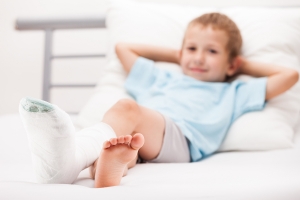Pain Control in Children
Pain control or relief for your child must be done carefully in conjunction with the directions on the medication or by your doctor.
Medication
- Always read the instructions that come with the pain medicine so that you give the right dose at the right time.
- If the pain is severe, then give the pain medicine regularly.
- Do not wait for the pain to get very bad. It takes 45 minutes to work.
- Combining different types of pain medicines is often more effective and safer at relieving pain than giving higher doses of one type only.
- Distracting the child will help with the pain- for example, watching TV, reading a story, massage or playing gentle games.
- Giving pain medicine at bedtime will help your child to sleep better- even if your child is fasting for an operation.
- Younger children are more difficult to assess for pain. Their behaviour however, can help you- crying, irritable, not eating or playing are signs of continuing pain.
- It is well-advised to focus on regularly taking simple pain-killers before looking for stronger pain-killers.
Injured Limb
- RICE– Remember- Rest Ice Compression Elevation
- A proper splint in the form of a cast will frequently provide adequate analgesia
- Elevating the limb reduces swelling which will often relieve pain
